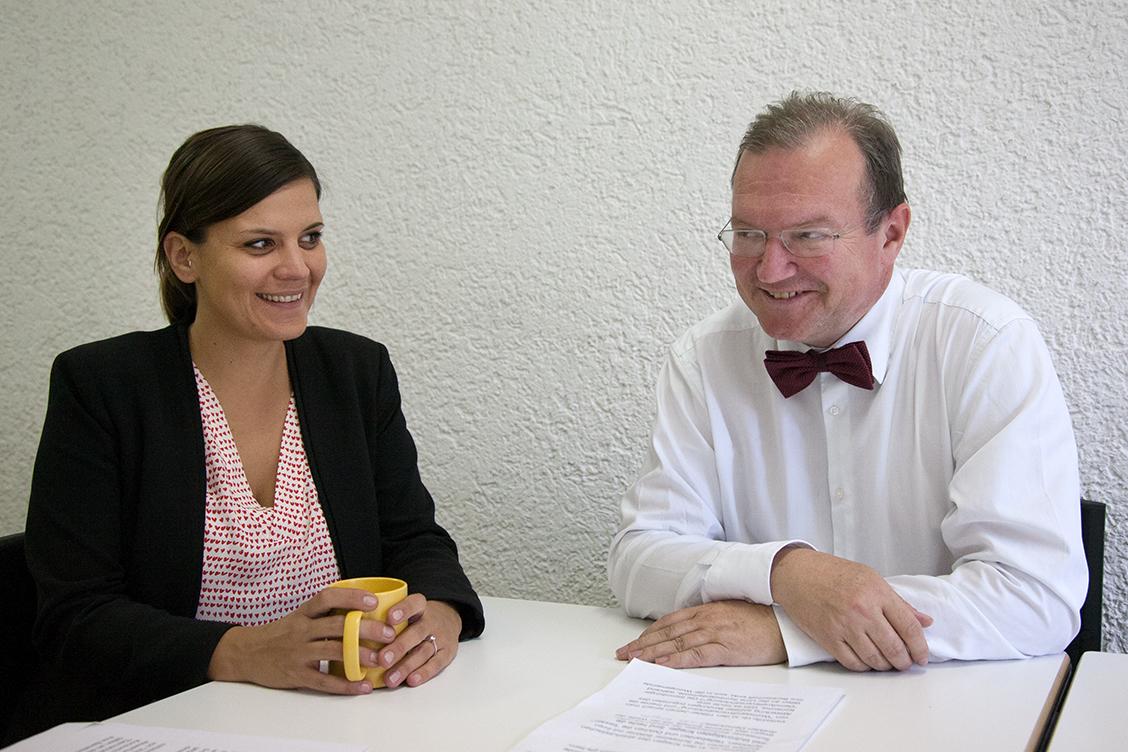Direct democracy key to more people power in US
Democracy in America is in crisis, as the ongoing races for president demonstrates. But there is a ray of hope coming with the initiative and referendum process, suggests new research by Benjamin Radcliff and Gregory Shufeldt.
Today, 24 states allow citizens to directly vote on policy matters. This year, more than 42 initiatives already are approved for the ballot in 18 states.
Voters in California will decide diverse questions including banning plasticExternal link bags, voter approval of state expenses greater than $2 billion (CHF2 billion), improving school funding, and the future of bilingual educationExternal link.
The people of Colorado will vote on replacing their current medical insurance programs with a single payer systemExternal link, and in Massachusetts people may consider legalizing recreational marijuanaExternal link.
The founders fathers would have been ambivalent about so much direct democracy.
Although the country was founded on the notion that people are happier when they have a say in government, the founders were not optimistic about the ability of people to govern themselves too directly.

James Madison, the “father” of the Constitution, famously arguedExternal link “the public voice, pronounced by the representatives of the people, will be more consonant to the public good than if pronounced by the people themselves”.
Rich and corporate
By the late 19th century, average Americans felt excludedExternal link from a representative system they saw as becoming a plutocracy.
Much like today, Americans then saw government controlled by the rich and corporate.
This gave rise to the Populist Era in which citizens demanded government be more responsive to their needs.
Most Populist Era reforms were expansions of direct democracy. Examples includeExternal link the popular election of Senators, a primary system for picking party candidates, and woman’s suffrage.
South Dakota adopted a system of “initiative, referendum, and recall” in 1898External link. Oregon and California quickly followed, and the system was adopted by another dozen statesExternal link in under ten years.
It’s been a slow build ever since. Most recently, Mississippi gave citizens the initiative in 1992. That brings us to a total of 24 states, plus the District of Columbia, now recognizing some form of direct democracy.
However, many have pointed to problems with direct democracy in the form of ballot initiatives.
swissinfo.ch publishes op-ed articles by contributors writing on a wide range of topics – Swiss issues or those that impact Switzerland. The selection of articles presents a diversity of opinions designed to enrich the debate on the issues discussed.
Maxwell SternsExternal link at the University of Maryland, for example, writes that legislatures are better because initiatives are the tools of special interests and minorities. In the end, initiatives are voted upon by an unrepresentative subset of the population, Sterns concludes.
OthersExternal link like Richard Ellis of Willamette University argue that the time-consuming process of gathering signatures introduces a bias toward moneyed interests.
Some suggest this has damaged direct democracy in California, where professional petition writers and paid signature gatherers dominate the process. Moneyed interests also enjoy a natural advantage in having the resources that ordinary people lack to mount media campaigns to support their narrow interests.
Fix broken system?
To curb this kind of problem, bans on paying people per signature are proposed in many states, but have not yet passed any legislature.
However, because Californians like direct democracy in principle, they have recently amended the processExternal link to allow for a review and revision, and they require mandatory disclosures about the funding and origins of ballot initiatives.
Finally, some say initiatives can be confusing for voters, like the two recent Ohio propositionsExternal link concerning marijuana, where one ballot proposition essentially canceled out the other.
Similarly, Mississippi’s Initiative 42External link required marking the ballot in two places for approval but only one for disapproval, resulting in numerous nullified “yes” votes.
Despite these flaws, our research shows that direct democracy might improve happiness in two ways.
One is through its psychological effect on voters, making them feel they have a direct impact on policy outcomes.
This holds even if they may not like, and thus vote against, a particular proposition. The second is that it may indeed produce policies more consistent with human well being.
Routes to happiness
The psychological benefits are obvious.
By allowing people literally to be the government, just as in ancient AthensExternal link, people develop higher levels of political efficacyExternal link.
In short, they may feel they have some control over their lives. Direct democracy can give people political capitalExternal link because it offers a means by which citizens may place issues on the ballot for popular vote, giving them an opportunity both to set the agenda and to vote on the outcome.
We think this is important today given America’s declining faith in government. Overall todayExternal link only 19% believe the government is run for all citizens.
The same percentage trusts government to mostly do what is right. The poor and working classes are even more alienated.
Our evidence comes from surveys of the American public large enough to allow comparisons across states.
Specifically, we used DDB-Needham Advertising’s Life Style StudiesExternal link.
Beginning in 1975, this study annually asks large numbers of Americans about trends, behaviors, beliefs and opinions. The study uses such large samples we can directly examine the impact of initiatives on satisfaction in spite of the fact that it has multiple state and individual level causes.
The statistical evidence is clear.
Higher satisfaction
Life satisfaction is measurably higher in states that allow initiativesExternal link than in those that do not.
This holds even when controlling for a large range of other factors, including income, education, race, age, gender, employment status, personal health, marital status, and church attendance.
We found that satisfaction also increases with the cumulative use of initiatives over time.
In other words, the more frequently a state has used initiatives to create its current policies, the happier people are.
While it is difficult to quantify the increase in happiness due to the complexity of the statistical models, it’s possible to say that living in a state that allows initiatives has about as much impact on happiness as one’s gender, but less impact than marriage or employment status.
States that use the initiative tend to have policies that help protect citizen prosperity, health, and security, all of which contribute to greater happinessExternal link.
This may be because citizens themselves use the initiative process to implement laws that directly aid them. Or it could be that legislators are more attentive to citizen well-being in states that have mechanisms for initiative, referendum, and recall.
Either way, the net impact on both satisfaction and well being is positive.
Perhaps more importantly, the study finds that lower and middle income people benefit most from initiatives. Simply put, the happiness of the rich and powerful in a state increases less (or even declines slightly) relative to happiness boost that ordinary citizens receive.
In other words, the greatest increase goes to those who are the least happy to begin with, effectively reducing the “satisfaction inequality” between the rich and poor.
The views expressed in this article are solely those of the authors, and do not necessarily reflect the views of swissinfo.ch. The slightly adapted text was originally published by the online platform The ConversationExternal link. This is a cooperation with the global direct democracy platform People2PowerExternal link.

In compliance with the JTI standards
More: SWI swissinfo.ch certified by the Journalism Trust Initiative



You can find an overview of ongoing debates with our journalists here. Please join us!
If you want to start a conversation about a topic raised in this article or want to report factual errors, email us at english@swissinfo.ch.